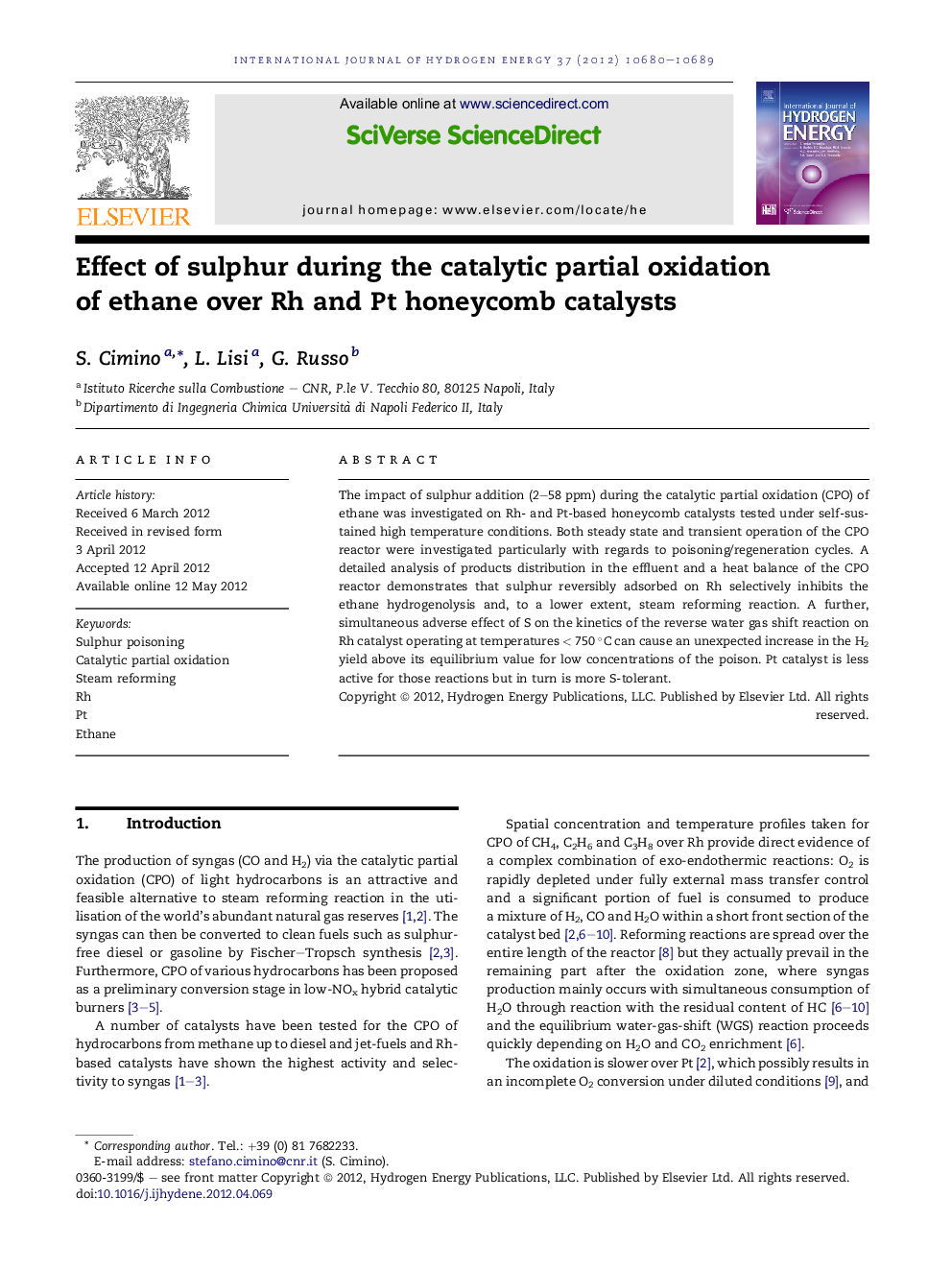| Article ID | Journal | Published Year | Pages | File Type |
|---|---|---|---|---|
| 1276349 | International Journal of Hydrogen Energy | 2012 | 10 Pages |
The impact of sulphur addition (2–58 ppm) during the catalytic partial oxidation (CPO) of ethane was investigated on Rh- and Pt-based honeycomb catalysts tested under self-sustained high temperature conditions. Both steady state and transient operation of the CPO reactor were investigated particularly with regards to poisoning/regeneration cycles. A detailed analysis of products distribution in the effluent and a heat balance of the CPO reactor demonstrates that sulphur reversibly adsorbed on Rh selectively inhibits the ethane hydrogenolysis and, to a lower extent, steam reforming reaction. A further, simultaneous adverse effect of S on the kinetics of the reverse water gas shift reaction on Rh catalyst operating at temperatures < 750 °C can cause an unexpected increase in the H2 yield above its equilibrium value for low concentrations of the poison. Pt catalyst is less active for those reactions but in turn is more S-tolerant.
► S-poisoning during CPO of ethane to syngas was studied over Rh and Pt honeycombs. ► S reversibly and selectively inhibits ethane hydrogenolysis and steam reforming. ► Reverse WGS is also slowed over Rh at T < 750 °C. ► Combined poisoning effects over Rh lead to a maximum in H2 yield with ≈3 ppm of S. ► Pt is less active but more tolerant than Rh to S-poisoning.
